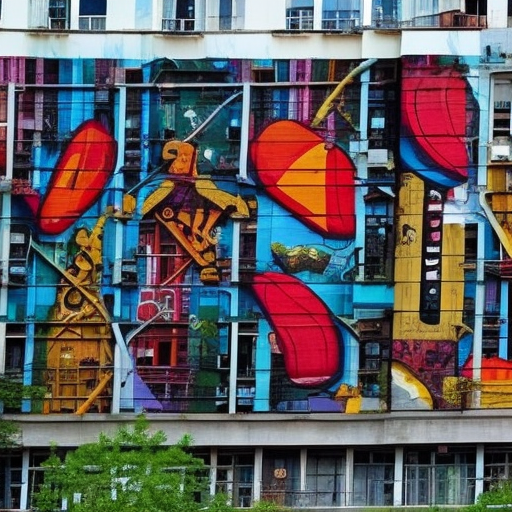Graffiti: A Form of Artistic Expression
Graffiti is a form of artistic expression that involves the creation of images or words on public surfaces, typically using spray paint or markers. While it is often associated with illegal activities and vandalism, graffiti has evolved into a recognized art form that can convey powerful messages and contribute to the cultural landscape of a city.
The Origins of Graffiti
Graffiti has a long history, dating back to ancient civilizations such as the Egyptians, Greeks, and Romans. These early forms of graffiti were often political or social in nature, serving as a means of communication or protest. In modern times, graffiti emerged as a subculture in the 1960s and 1970s in cities like New York and Philadelphia, where young people began using public spaces as a canvas for their artistic expression.
The Evolution of Graffiti
Over the years, graffiti has evolved from simple tags and signatures to intricate murals and street art. Artists have developed unique styles and techniques, incorporating elements of typography, illustration, and abstraction. Graffiti can be found in various forms, including stencils, wheat-pasting, and 3D installations. Some artists have even transitioned from the streets to galleries, gaining recognition and acclaim in the art world.
The Controversy Surrounding Graffiti
Despite its growing acceptance as an art form, graffiti remains controversial. Many view it as a form of vandalism that defaces public property and contributes to urban decay. Cities have implemented strict anti-graffiti laws and policies, leading to the arrest and prosecution of graffiti artists. However, others argue that graffiti adds vibrancy and character to urban spaces, transforming dull walls into colorful works of art.
The Impact of Graffiti on Urban Culture
Graffiti has had a significant impact on urban culture, shaping the identity and atmosphere of cities around the world. It has become an integral part of hip-hop culture, with graffiti artists often collaborating with musicians and dancers to create a multidisciplinary artistic experience. In addition, graffiti has been used as a tool for social and political activism, addressing issues such as racism, inequality, and environmental concerns.
The Rise of Legal Graffiti
In response to the controversy surrounding graffiti, some cities have embraced legal graffiti initiatives. These programs provide designated spaces where artists can create murals and street art without fear of legal repercussions. By offering a platform for artistic expression, these initiatives aim to foster creativity, beautify neighborhoods, and discourage illegal graffiti.
The Global Recognition of Graffiti
Graffiti has gained international recognition, with artists from different countries and cultures contributing to its diverse and dynamic nature. Street art festivals and exhibitions showcase the talent and creativity of graffiti artists, attracting visitors and tourists from around the world. Some cities, such as Berlin and Melbourne, have become renowned for their vibrant street art scenes, attracting artists and enthusiasts alike.
The Future of Graffiti
As graffiti continues to evolve, its future remains uncertain. While some artists strive to push boundaries and challenge societal norms, others seek to preserve the traditional elements of graffiti. With advancements in technology, digital graffiti has also emerged, allowing artists to create virtual artworks that can be experienced through augmented reality. The future of graffiti lies in the hands of the artists who will continue to innovate and redefine the boundaries of this dynamic art form.
In conclusion, graffiti is a form of artistic expression that has evolved from its controversial origins to become a recognized and influential art form. Despite the ongoing debate surrounding its legality and impact on public spaces, graffiti has contributed to the cultural landscape of cities worldwide. Whether it is viewed as vandalism or art, graffiti continues to captivate audiences, provoke thought, and inspire creativity.












